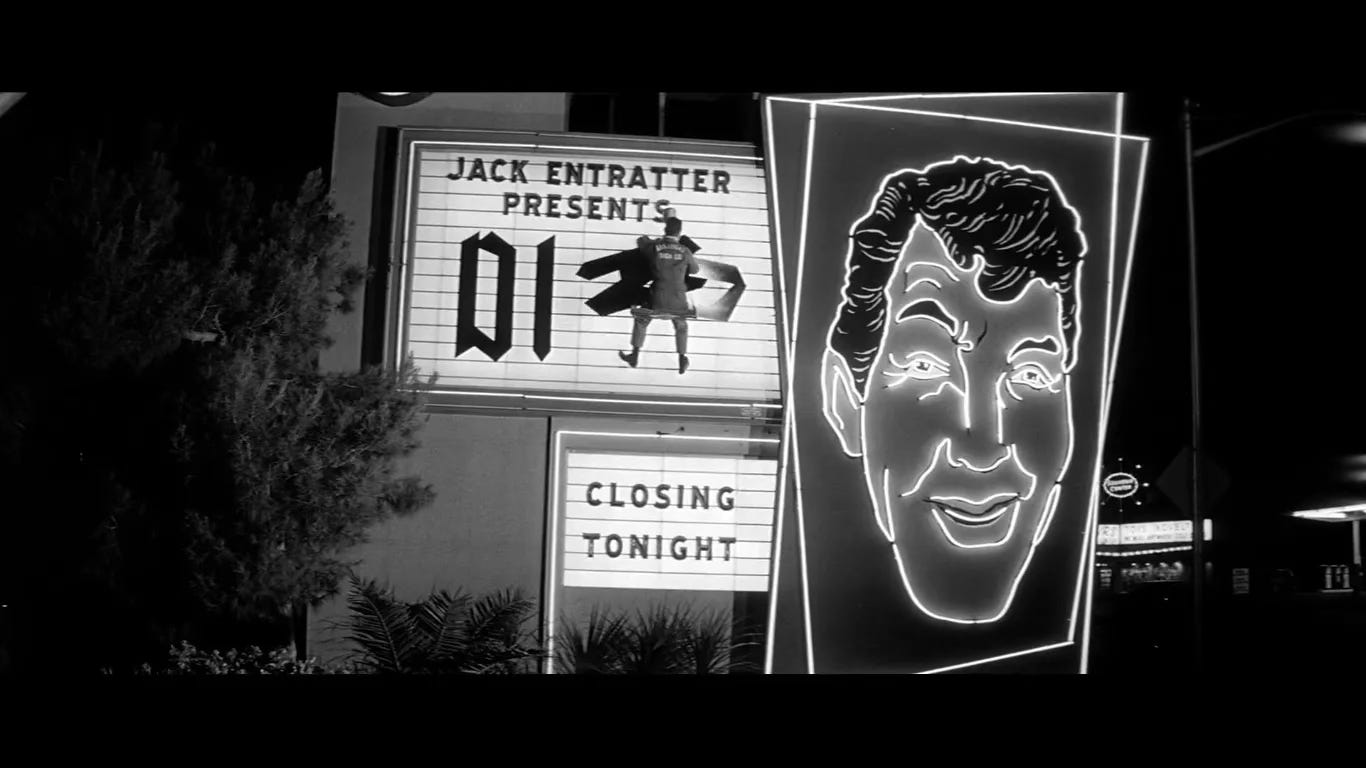Yesterday I started writing an intro for the screening of Billy Wilder’s Kiss Me, Stupid that I’m presenting in LA on Tuesday (tickets here, please come!). I don’t know how much of this will actually make it into the intro, but this movie makes me think a lot about the transition that I made from being a passive consumer of entertainment, to thinking critically about the things I watch, particularly movies, for a living. Kiss Me, Stupid is a movie with a vulgar, apparently pro-male chauvinist façade, which for many viewers fatally obscures the earnest and even melancholy commentary underneath. I watched it a lot in my early-20s because I was trying to figure out why I was drawn to it. I showed it to several young men who I was trying to date between the ages of 21 and 25, as a litmus test for whether or not they could “hang” with something that was apparently offensive, but which also had multiple layers of meaning. Most of them, it turned out, could not hang.
I think, pre-college, I was basically a voracious, passionate, but passive viewer. While I could grasp irony as stance/affectation (I was born six months before last call on Gen X), as well as a driver of comedy and even tragedy, I was not in the practice of looking for hidden or even subtextual meanings in movies. That changed during my first semester at the School of the Art Institute of Chicago, I want to say almost immediately. That school in 1998 was really an incredible place for someone who was as malleable and unformed and desperate for an identity that I could cling to as I was at 18, and both the curriculum and the community turned a light on inside of me. Learning how to analyze visual art, and coming to understand the ways in which meaning has been conveyed through things like symbology and form and color over the course of history, changed everything for me. If there is one thing that makes me different in terms of the way I approach films and film history, it’s the understanding of visual language — and the history of visual language, and the ways in which that language creates a dialectic between artists and within a single artist’s body of work — that I learned as an undergraduate.
This is more important to what I do now than anything I learned in Cinema Studies graduate school. By the time I arrived at NYU at the age of 23, I was no longer so open, and I was also distracted by financially needing to work full time while in school. My big takeaway from graduate school was the understanding — important, but not exactly thrilling — that there are rigid differences between academic writing and commercial writing, and between history, criticism and theory. I bristled against those differences then, and ultimately created a space for myself in which I can basically ignore them. But, it took awhile to find the courage/foolishness to do that. When I was finished with that program at age 25, I had been brought down to earth.
So, of course I romanticize my first year of art school, which was maybe the most intellectually and culturally exciting time of my life. I’m at an age at which my body is slowly breaking down and superficial interventions have never been more tempting, and still, one of the hardest things about aging for me has been becoming aware that I will never be able to recreate that feeling of being surrounded by other people my age who were equally curious, equally naive to the ways of the world and had few responsibilities beyond ingesting as much as possible about the things we were interested in, and acquiring new things to be interested in. I have never again felt that sense of possibility.1
That said, I am able to sort of experience a ghost version of that feeling when I look at art and am able to make connections or access deeper ideas using the rudimentary skills for seeing that I learned in Chicago. I had that experience this morning at the Zwirner gallery in Los Angeles, where .cataclysm., a recreation of a landmark 1972 Diane Arbus retrospective, is ending after today (it will probably over by the time you read this, but I am typing as fast I can just in case anyone sees this and can make it out this afternoon).
Keep reading with a 7-day free trial
Subscribe to souvenir ce to keep reading this post and get 7 days of free access to the full post archives.




